
A common joke in the fashion industry is that when the Japanese discovered Americana, they also discovered they were better at it than Americans. It’s no secret that the Japanese approach to personal craft, their commitment to excellence, and an obsessive desire for authenticity have created some of the most revered brands we love in fashion. From heritage brands like VAN or Big John to contemporary mainstays like Visvim or Engineered Garments, Japanese appreciation for American culture has cultivated timeless product that have become some of the best representations of American design and spirit that we have today.
Designer Yuki Matsuda is cut from that very tree. Like his peers Hiroki Nakamura or Daisuke Suzuki, Matsuda honors the history of American design and methods while applying a Japanese approach to product. Today his brand Yuketen is considered one of the finest in leather footwear and luggage, pairing his love for American heritage with a tasteful dash of modern innovation and style. Besides Yuketen, the designer also runs Monitaly, Chamula, and Epperson Mountaineering, an apparel brand, Mexican footwear & accessories brand, and backpackline respectively.
In lieu of the passing of magazine mogul Hugh Hefner, Yuki was generous enough to allow us into his beautiful Los Angeles home to take a peek at a few of his favorite vintage Playboys and talk about their significance.
 So when did you start collecting Playboys?
So when did you start collecting Playboys?
I believe in 1990? It’s not that long ago, but at the time I started discovering old Playboy [magazines] had a lot of great content. Like, the articles weren’t always focused on girls – they speak on how you should think, why we don’t like the military, why we don’t like the country – a lot of very interesting stuff. It was almost like everybody is looking this way, but Playboy would say, “well, maybe we should look this way.” In that way it’s a fascinating magazine.
It’s an interesting because even guys like Stephen King, I think some of his early published pieces were through Playboy. [Indeed, Playboy has featured the likes of literary legends like Ian Arthur C. Clarke, Roald Dahl, Haruki Murakami…)
That’s awesome. Playboy–I think from 50’s–Hugh started as a very small production.
What was your perspective of Playboy before you got to pick one up and read it?
I was at a bookshop in New York – Gallaghers Paper Collectibles. At the time he had Esquire magazine, I mean, first edition to up to current date, GQ Magazine he had the whole collection–whatever the fashion pieces/magazines–he had. Of course he had Playboy too. I think I picked up my first vintage copy from him.
“It was almost like everybody is looking this way, but Playboy would say, ‘well, maybe we should look this way.'”
What stood out to you when you were first reading them besides the difference in content?
In the first edition and second edition ones, it wasn’t as advertisement heavy. But later on, in the 60’s and 70’s, more and more advertisements from all the brands, whiskey, jeans, start showing up.




Look at these guys, all these guys have something to do with the magazine. Advertisements from Playboy were always attractive. It was different than looking at ads from Esquire or GQ. Somehow Playboy always had tasteful advertisements.



Do you ever find yourself looking back at advertisements for inspiration?
Oh yeah of course. I mean, look at this:

That isn’t something you’d necessarily expect, that’s a beautiful illustration….
Obviously, Playboy is known for their girls, but at the same time it also seems like part of their goal was to be contrarian…
I think more of the more aggressively periodicals with naked women had already been done, but Playboy was not just a magazine with naked women – it was more for the intellectual gentlemen, who didn’t take himself too seriously. I mean, look at this, there’s all these different articles, fun writing and reading…


 Jennifer Jackson – Playboy’s first African-American centerfold, March 1965, six years before Darine Stern, their first Black cover model who came 3 years before Vogue and 26 years before Sports Illustrated ever dared to feature their own (Black cover model).
Jennifer Jackson – Playboy’s first African-American centerfold, March 1965, six years before Darine Stern, their first Black cover model who came 3 years before Vogue and 26 years before Sports Illustrated ever dared to feature their own (Black cover model).
It’s funny, because when I’m looking at this Playboy, it’s almost like I’m reading a Japanese fashion magazine, in the way that they display product or the way they create the stories within a lifestyle concept.
And they love to make jokes! They love to make fun. Look at this, this is gorgeous….
You don’t see anything like this in magazines anymore…
Not anymore. This is a December issue, 1971…but even for Playboy, not every magazine is like this…


There’s a pop-up!
That’s why this magazine is here. Look at these cartoons from Harvey Kurtzman. This 1959 issue is not as aggressive – Lanvin, Gregory Peck. So I guess the older magazines were not as aggressive 1970’s ones.

It’s interesting to see how the Chanel ad hasn’t changed very much….
For me, just looking at the ads is inspiring, even just the typography gives me ideas for my tee shirts or care labels.
Do you have any era that you particularly like in particular?
I’m pretty open for any age now. I used to focus on the 1950’s, when I was more strict with my focus, but now I’m more open. Even if yesterday someone makes great stuff – great, I will take it. If someone made great stuff two thousand years ago and it still looks great, that’s cool, I’ll take it too.
 What drew you to the 50’s originally?
What drew you to the 50’s originally?
The 50’s is like the American dream. In the 50’s, even the cars have wings. It’s almost like you’re going to space. They weren’t necessarily about speed or more for this or more that – not functionality at all. It just looks like a spaceship – to me that’s like…whoa!
It’s like they were more focused on dreaming than just function…
I think in the 1950’s people in America had so many hopes and dreams. So all the designs reflected that. The 1960’s brought more thought about ending war, ecology. Same with the 70’s…
“I think in the 1950’s people in America had so many hopes and dreams. So all the designs reflected that.”
Where were you during that time?
I was a kid, just a normal kid.
Did what America was putting out–the music, the protests–did that reach you in Japan?
I started having interest in America I think in 1980 or 1981. Before then I was just into things that were going on in Japan, because up to 15 years old, I hadn’t discovered made in USA.


What as your first experience discovering US stuff?
Definitely music.
 Anybody in particular?
Anybody in particular?
Definitely Brian Setzer. Stray Cats. Rock and roll.
What was your first impression of Hugh Hefner?
I always thought he was a wild man. (laughs) I never thought I wanted to be him, I thought how we were different actually. But when I look at Playboy magazine, it’s very, very artistic. Even just photographs were trying to create an image that was different than before. A lot of people looked at (Playboy) photos and learned how to take photos too. “Oh ok, when you take a photo, use this wide perspective or this small one…” There’s a big difference right? Look at this picture, he could focus just here on the girl, but he uses the wreath on the wall as a visual reference to balance the picture.



In a way, do you sometimes feel like Playboy is a kind of members-only magazine?
Definitely in the 50’s, 60’s, 70’s it was one of the best examples of the American gentleman magazine, more than the others. Look at this cover of Carol Lynley: they repainted her image for a more scary look, changing her eyes and mouth, to create new art. Before photoshop, they had an artist to come in to make something new.

You know I’m a designer for clothing and shoes. So when I read magazines, it helps give me a reference for where things came from. I see something, then I need to learn, I need to digest, and then I can go next step; not just taking something without understanding it.

 It gives you a history of the style…
It gives you a history of the style…
Look at these two Jack Purcell ads. Two different shoes. What most people don’t know is that Jack Purcells were most famous for their sole, specifically their arch support. See, a lot of old sneakers did not have a shank or any kind of lateral support to guide your foot as you walk – without this, the shoe will fold any way it wants. The arch support of the Jack Purcell facilitated a more natural walking/running motion. That’s why the sole was so important and that’s why there was many different kinds of Jack Purcell’s (with its signagture footbed), but somehow today people think that there was only one style.
So reading old magazines reveals these kinds of things…
I think the most important thing that Hugh Hefner did was his lifestyle concept – you have article, you have fashion, you have a cars, he covered everything! Like you said before – like a Japanese fashion/culture magazine…
“So when I read magazines, it helps give me a reference for where things came from. I see something, then I need to learn, I need to digest, and then I can go next step; not just taking something without understanding it.”

Even these photos where he’s taking us to the Grand Prix, it’s seems like it’s from a fashion perspective – really classy dressed guys – you’re really looking at the fashion of the sport….
That’s true. Playboy was born in an era when people had time to enjoy things – now time goes so fast.


“Playboy was born in an era when people had time to enjoy things – now time goes so fast.”












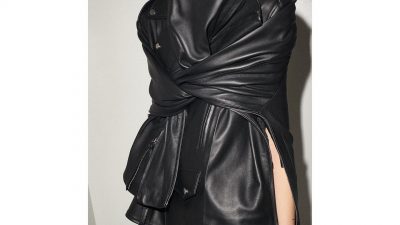















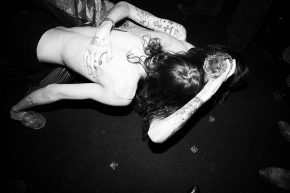
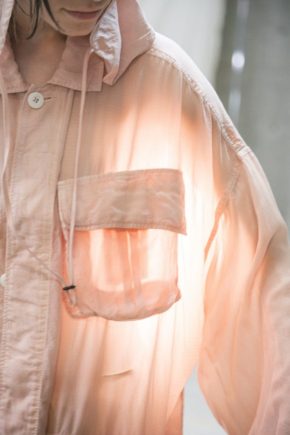
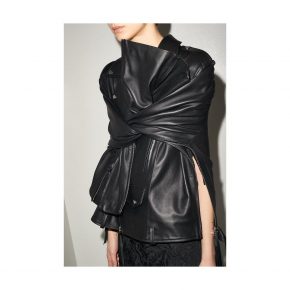
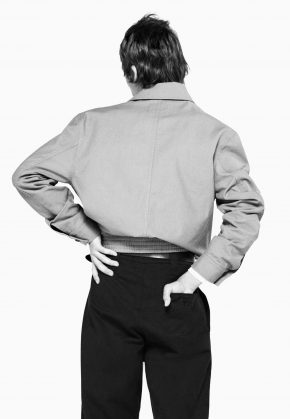
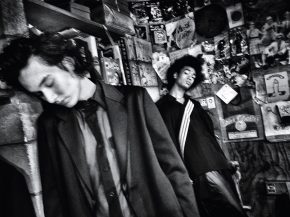
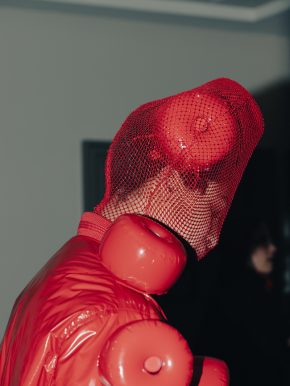
Comments